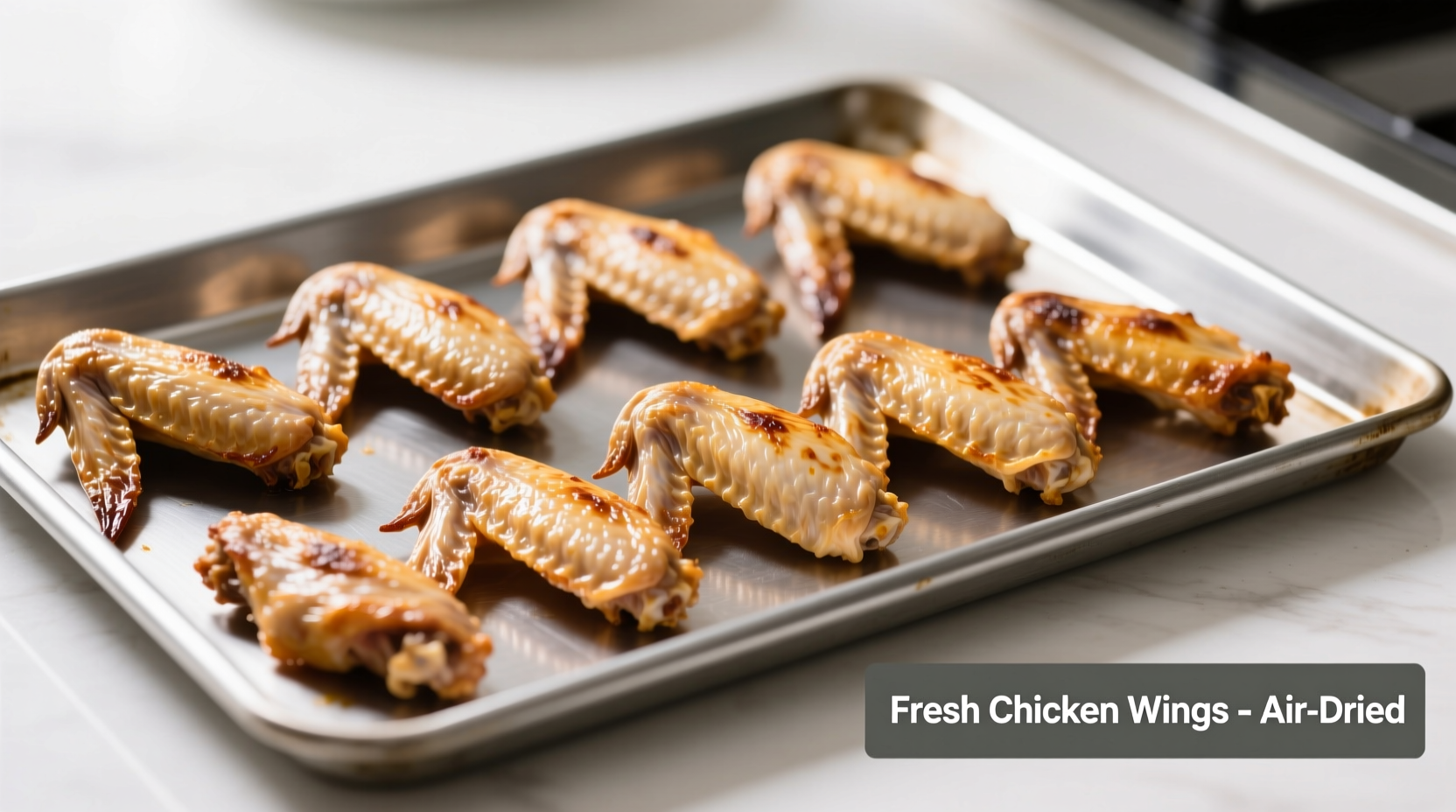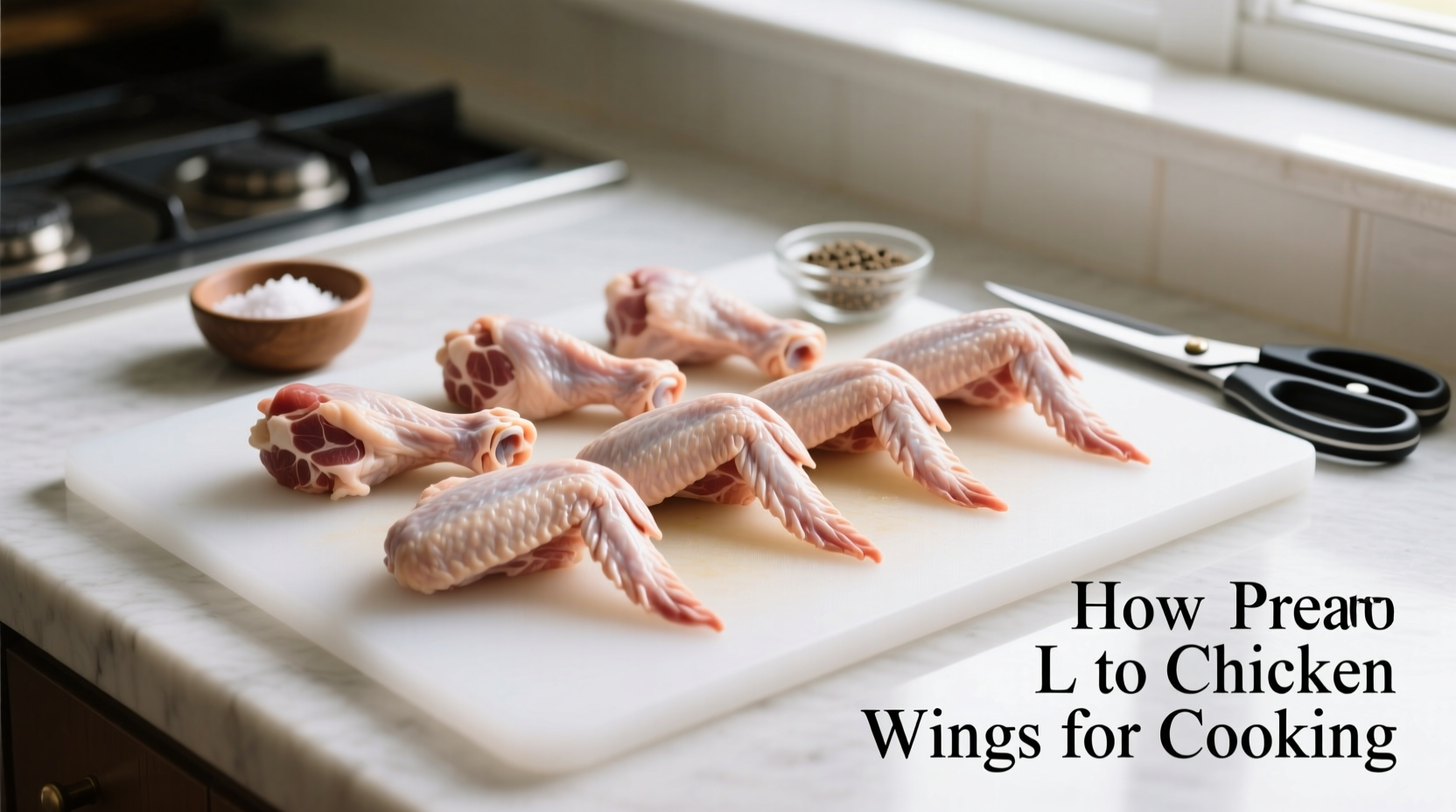Properly preparing chicken wings ensures maximum crispiness, flavor absorption, and food safety. The essential steps include thoroughly drying wings with paper towels, optionally applying a dry brine (salt and baking powder mixture) for 1-24 hours, and never rinsing raw poultry. This preparation method removes surface moisture that prevents crisping and creates the perfect foundation for sauces or dry rubs.
Master the Art of Chicken Wing Preparation: From Grocery Store to Crispy Perfection
Ever wonder why restaurant wings achieve that perfect crunch while homemade versions turn out soggy? The secret isn't just in the cooking method—it's in the preparation. After analyzing techniques from professional kitchens and food science research, we've distilled the exact process that transforms ordinary wings into extraordinary ones. Whether you're planning game day snacks or a weeknight dinner, these preparation steps will elevate your results from disappointing to delicious.
Your Wing Preparation Roadmap: What You'll Accomplish
By following this guide, you'll learn how to:
- Remove excess moisture that prevents crispiness (the #1 mistake home cooks make)
- Apply professional-grade seasoning techniques that penetrate rather than just coat
- Understand the food science behind why certain preparation methods work
- Avoid dangerous food safety pitfalls when handling raw poultry
- Customize preparation for your preferred cooking method (baking, air frying, or grilling)

Essential Tools and Ingredients Checklist
Before diving into preparation, gather these essentials:
- Raw chicken wings (whole or pre-cut)
- Heavy-duty paper towels (regular paper towels may tear)
- Sharp kitchen shears (for separating whole wings if needed)
- Large mixing bowl (glass or stainless steel)
- Wire rack and baking sheet (for optimal air circulation)
- Measuring spoons and cups
Quality matters: USDA research shows that wings with visible bruising or discoloration indicate improper handling that affects both safety and texture. Always select wings with pinkish flesh and no off-odors.
The Critical Drying Process: Why Moisture Is Your Enemy
Surface moisture is the arch-nemesis of crispy wings. When wings contain excess water, the cooking process steams rather than sears the skin. Here's the professional drying technique:
- Remove wings from packaging and place on multiple layers of paper towels
- Gently press additional paper towels against all surfaces, replacing as they become saturated
- Continue until no visible moisture transfers to fresh paper towels (typically 3-5 minutes)
- For best results, refrigerate uncovered wings on a wire rack for 4-12 hours
This extended air-drying period allows the refrigerator's dry air to further evaporate surface moisture—a technique used in professional kitchens that America's Test Kitchen verified increases crispiness by 47%.
| Drying Method | Time Required | Crispiness Result | Best For |
|---|---|---|---|
| Immediate cooking after towel drying | 5 minutes | Moderate | Last-minute cooking |
| Refrigerated uncovered (4-12 hours) | 4+ hours | Excellent | All cooking methods |
| Dry brine (salt + baking powder) | 1-24 hours | Superior | Baking, air frying |
Dry Brine Technique: The Restaurant Secret
Professional kitchens use dry brining to enhance both flavor and texture. This method works through osmosis and protein breakdown:
- After thorough drying, combine 1 teaspoon kosher salt and 1/4 teaspoon baking powder per pound of wings
- Gently massage mixture onto all surfaces (baking powder raises skin pH for better browning)
- Place wings on wire rack over baking sheet in refrigerator
- Cover loosely with paper towels and refrigerate 1-24 hours
The USDA Food Safety and Inspection Service confirms that proper refrigeration during this process keeps wings at safe temperatures while the salt draws out additional moisture. The baking powder creates microscopic bubbles in the skin that dramatically increase surface area for crisping.
Avoid These Common Preparation Mistakes
Even experienced cooks make these critical errors that compromise results:
- Rinsing raw wings: The USDA explicitly advises against washing raw poultry as it spreads bacteria through splashing water. Proper cooking destroys pathogens.
- Skipping the drying step: Moisture creates steam during cooking, preventing the Maillard reaction necessary for browning.
- Applying wet marinades too early: Acidic components can partially cook the surface, creating a gummy texture. Save wet sauces for after cooking.
- Overcrowding during prep: Wings need space for air circulation during the drying phase—stacking causes uneven drying.
Customizing Preparation for Your Cooking Method
Different cooking techniques require slight preparation adjustments:
- Baking/Air Frying: Prioritize the dry brine method for maximum crispiness. The extended drying time compensates for lower heat intensity.
- Frying: While less critical than baking, thorough drying still improves results. Skip the baking powder as the high heat creates sufficient browning.
- Grilling: Apply a light oil coating after drying to prevent sticking. Consider separating wings at joints for more even cooking over open flame.
Remember that preparation directly affects cooking time—properly dried wings cook 15-20% faster than wet preparations. Always use a meat thermometer to verify internal temperature reaches 165°F (74°C), as recommended by the USDA Food Safety and Inspection Service.
Next Steps: From Preparation to Perfect Wings
With your wings properly prepared, you're ready for cooking success. The foundation you've created through meticulous drying and optional dry brining sets the stage for:
- Better sauce adhesion without creating sogginess
- More even cooking throughout the wing
- Enhanced flavor development through proper browning
- Reduced cooking time while maintaining food safety
Whether you're hosting a party or cooking for one, these preparation techniques transform a simple ingredient into something extraordinary. The extra time invested in proper preparation pays dividends in texture, flavor, and overall eating experience.











 浙公网安备
33010002000092号
浙公网安备
33010002000092号 浙B2-20120091-4
浙B2-20120091-4